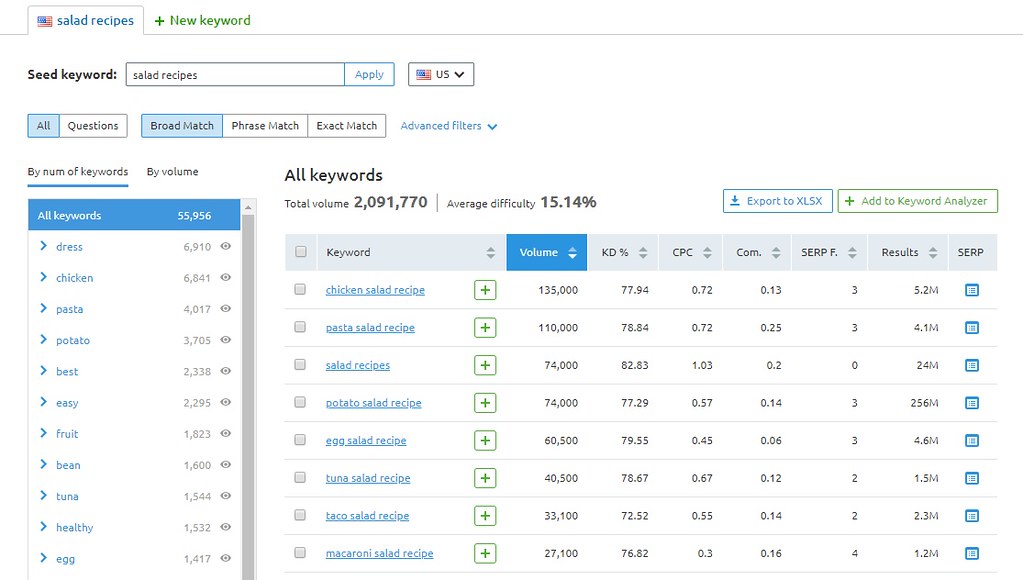Unfortunately, optimizing your website is not a quick and easy process. SEO methods are constantly changing and evolving as search engines change their algorithms and as new technology becomes available. You should also know that SEO is not something you do just once – you need to be constantly updating your site to ensure that it keeps ranking well.
If you want to optimize your website or blog for maximum performance, there are some simple SEO mistakes you may need to correct to get started. Then, you can put to work some of the 20 actionable SEO techniques provided in this article to really start boosting your search results.
Stop Making These Common Mistakes
Search engine optimization relies on multiple different elements working together. Every action you take when designing your website can affect your search engine ranking, and you need to know how specific actions affect your SEO. Here are some of the most common mistakes people make with SEO that you should avoid:
- Choosing the wrong keywords
- Overuse of keywords (keyword stuffing)
- Not optimizing content for your keywords
- Plagiarizing or duplicating content
- Neglecting title tags and meta data
- Omitting quality external links
- Not optimizing for a mobile-friendly experience
- Failing to use content analytics
Each of these mistakes can have a serious impact on your SEO, so take steps now to correct them. If you need some guidance, try using some of the 20 actionable steps provided in the next section.
Put These 20 Actionable SEO Tips to Work
When it comes to optimizing your website or blog, there are many things to do, so it can be difficult to know where to start. Sometimes you just have to pick something to focus on and get to it. If you’re looking to improve your SEO, here are 20 actionable tips you can put to work right now – just pick one and give it a try!
1. Do your keyword research
Keywords are the backbone of any SEO strategy. Before creating new content, you need to determine the proper keywords and do your research about exactly which ones to use based on their competition ranking. Generally speaking, you should have a collection of keywords you optimize your site for as a whole with individual posts targeting related keywords.

2. Choose a target keyword for each post
Even if your whole website is optimized for certain keywords, you should choose a target keyword for each post and use it well. In addition to choosing keywords based on their competition ranking, you should also Google them to see if there are related keywords you can work into the post as well. Don’t be afraid to choose a keyword with low competition – if you are just starting out, these are actually the keywords you want to optimize for so you can start building site traffic and eventually graduate to higher ranking keywords.
3. Do some competitive research
Even after you’ve chosen your target keyword, you need to do some competitive research. There are online tools you can use to see which keywords your direct competitors are ranking for – this will help you narrow down your target keyword and choose some variant keywords as well. You also want to put your target keyword into Google to see what the top-ranking sites are doing well and what you can improve with your own content.
4. Identify and fill content gaps on your site
The overall goal for your site is to provide informative content that ranks well and satisfies your readers. Part of creating a well-rounded and authoritative website is providing high-quality and comprehensive content. Before you write your next post, review the existing content on your site and identify any potential gaps that you could fill with the new post. You can also use site analytics to see which keywords aren’t ranking well and use the new content to boost those keywords.
5. Answer your audience’s most pressing questions
In addition to providing content relevant to your target audience, you also want to answer their most pressing questions. One way to do this is to put some of your top keywords into Google then scroll to the bottom to look at the relevant searches – you may find some questions there or you can try Googling something like “most common questions about” and insert your keyword.
6. Include case studies and reputable sources
When creating new content, you want to make it easy to read for your target audience, but you also want to make it credible. When referencing specific facts, be sure to cite case studies and reputable sources. Not only will these references lend your site credibility, but citing the sources is an opportunity to create outbound links.
7. Hone your introduction-writing skills
The first few sentences of any post are the most important –these are the sentences that will either hook your reader or send them to another site. When writing an introduction, you want to keep it short and you want to tell the reader exactly what they’re going to get from the post. You can start with a question, present a common problem, or just dive right in and give a preview of the post. Basically, you want to write an introduction that makes your readers excited to read more.
8. Analyze and optimize your titles
Not only is the introduction to your post important, but so is the title! Your title is an excellent opportunity to use your target keyword, but you also want it to grab your readers’ attention. It should be an accurate reflection of what the post is about while also incorporating the keyword. There are several title analyzers online that can help you learn how to create a quality title – use them to go back and improve your existing post titles.
9. Make all of your content readable and easy to digest
The content on your site needs to be credible and backed by reputable sources, but it should also be readable and easy to digest. Avoid long paragraphs and make sure to break things up using bulleted lists and images. Keep most of your sentences under 20 words and limit your paragraphs to 2 to 4 sentences. If you’re using WordPress on your site, consider downloading the Yoast plugin which rates each post for readability and provides suggestions for improvement.
10. Link out to reputable sources and quality references
As was already mentioned, citing reputable sources and case studies is a great opportunity to create external links. Pages that use external links tend to rank higher, especially when those links go to high-ranking sites. Don’t throw in links just for the heck of it, but look for opportunities that will boost your SEO while also providing value to your readers.
11. Improve your meta data
One place where many website owners often miss an opportunity to boost their rankings is in the meta data. Basically, the meta data is the sentence or two that appears under your title page in Google search results. It should be a brief description of the post and, ideally, should include your target keyword near the beginning. Limit meta descriptions to 155 characters – anything longer and Google will automatically cut it off.
12. Optimize for mobile users
More and more, customers are accessing content on mobile devices, so you need to make sure your site is optimized for both desktop and mobile users. There are plenty of tools out there to help you optimize your site but you should also just spend some time accessing your content on mobile devices to get a feel for where you could make improvements.
13. Add descriptive alt text for your images
The alt text for images on a website is similar to a caption but it doesn’t actually show up on the page. Alt text is used by visually impaired users and other people using screen readers to tell them what each image depicts. While you might be tempted to just throw in a keyword as your alt text, that could make your site look spammy to Google. Rather, write an accurate description of the image, working in keywords when you can do so naturally.
14. Shorten your page URLs
When it comes to SEO, you probably don’t think much about your URLs. In WordPress, the URL is automatically created from the page title, but you can change it to whatever you want. Most users prefer shorter URLs, so pick out the most important words from your title (ideally your keywords) and create a shortened URL.
15. Fix any broken backlinks on your site
Not only should you be looking for opportunities to link out to reputable sources, but you should also be checking the backlinks to your site to make sure they still work. There are online tools you can use to find broken backlinks and, from there, you can either contact the linking site to make the repair or set up a 301 redirect yourself. You may also want to look for broken links on your competitors’ sites and offer a link to your own site as a replacement.
16. Look for opportunities to create infographics or videos
While content is king when it comes to SEO, you also have to think about the visual aesthetics of your site. Sometimes information is simply easier to convey through an infographic or a video, so look for posts and other content on your site that could be well served by multimedia content.
17. Add internal links to your content
In addition to linking out to external sources, you should also be linking to your own content within each post. Internal links make it easy for your readers to find relevant content which adds value – it also keeps them on your site longer which boosts your rankings. This is a great way to boost SEO for low-ranking pages, simply link to a high-ranking page for a quick boost.
18. Make it easy for your readers to share your content
The purpose of SEO is to make your content easy for your readers to find. Online searches will drive a significant portion of your total traffic, but you should take advantage of every opportunity you have to reach out. By making your content easy for your readers to share, you can get them to do some of the work for you.
19. Work on your social media strategy
While social media doesn’t influence your search engine rankings, it can help you increase your target audience and get more people to your site. Some simple things you can do include sharing new posts on social media, displaying social media buttons in a prominent location on your site, and creating custom-made feature images for every post.
20. Sign up for Google Search Console
A free service offered by Google, Google Search Console will actually identify problems with your website and give you suggestions for how to fix them. The focus is on more technical aspects of SEO such as correcting 404 (not found) errors and server errors, but every little improvement you make to your site has the potential to boost your ranking.
Conclusion
In addition to following these 20 actionable steps to improve your site’s SEO, you should make it a priority to keep your content updated. Making even simple updates to your content could result in a huge boost in search traffic and it is an easy enough thing to do.
